The “luminist architecture” of Steven Holl
Holl #Holl

Plenty of buildings designed by architect Steven Holl are showstoppers from the outside. But, he hoped, not too many: “They have to be better when you go in!”
In a field where the first impression is often the only impression the public ever gets, Holl asks us to take the time to experience his works from within – the way he experiences them in his mind long before the first brick is ever laid.
“You can’t look at architecture in an image, especially on the internet, and understand it,” he said. “You need to walk through it. You get a sense of the light, the texture, the acoustics, the smell, the perspective of overlapping spaces. It’s like a piece of music.”
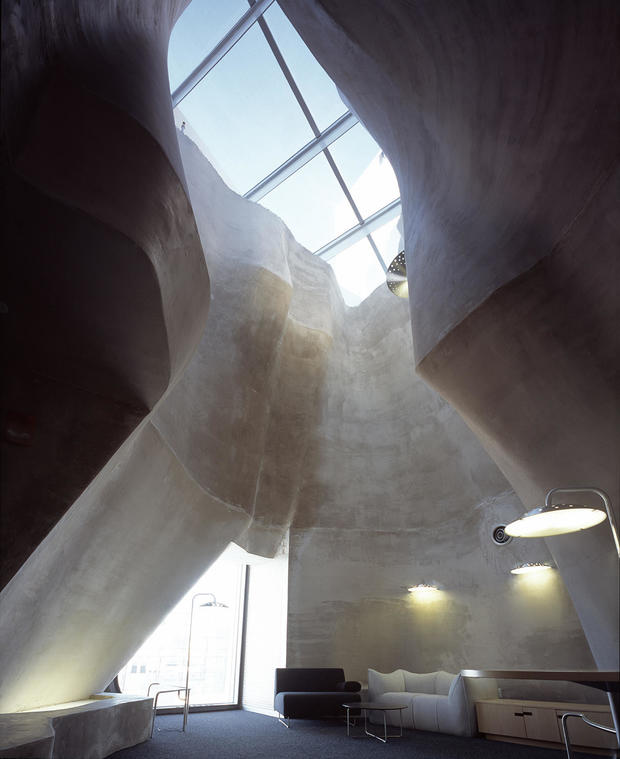 Simmons Hall at the Massachusetts Institute of Technology, designed by Steven Holl. Andy Ryan/Steven Holl Architects
Simmons Hall at the Massachusetts Institute of Technology, designed by Steven Holl. Andy Ryan/Steven Holl Architects
And the music of Holl’s designs never seems to repeat itself. His works help define the cities they stand in – from Kansas City, Missouri, to Beijing, China; from Helsinki, Finland, to Washington, D.C. If there is one style that unites them all, it’s the use of light – what Holl calls “luminist architecture.”
Braver asked, “Every corner looks different; there’s nooks, there’s crannies. What’s going on?”
“That’s the interest of architecture – it draws you through,” Holl replied. “It’s not a kind of grid of repetitive, boring spaces.”
Holl took “Sunday Morning” on a tour of The REACH, completed in 2019. It’s an unexpected addition to Washington, D.C.’s Kennedy Center for the Performing Arts.
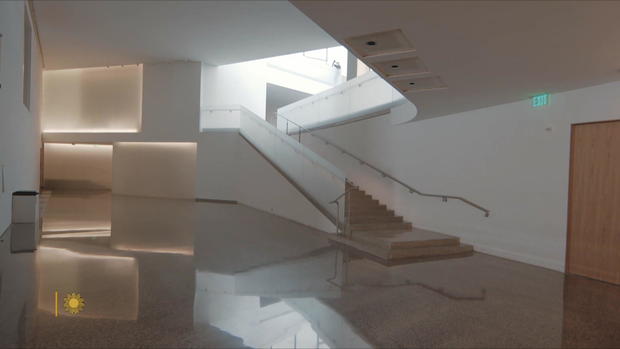 The interior of The REACH, at the Kennedy Center for the Performing Arts in Washington, D.C. CBS News
The interior of The REACH, at the Kennedy Center for the Performing Arts in Washington, D.C. CBS News
Braver said, “I always feel like when you walk into the old building there’s a sense, ‘Oh, this is going to be very grand.’ And when you walk into this space you feel, ‘This is gonna be fun!’ It’s a big difference in mood. … Kind of the sassy little sister of buildings!”
“Yes, and that’s intentional. Because there’s a certain pomposity that needs its anecdote,” he said.
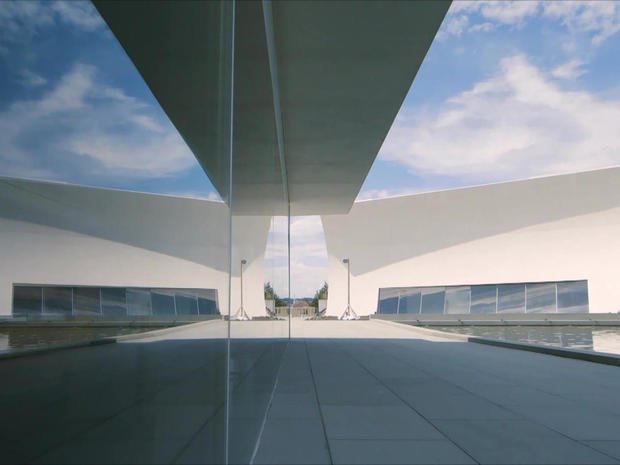 An exterior view of The REACH, at the Kennedy Center for the Performing Arts in Washington, D.C. CBS News
An exterior view of The REACH, at the Kennedy Center for the Performing Arts in Washington, D.C. CBS News
A collection of contrasting yet complimentary forms, The REACH is reminiscent of Holl’s personal retreat in New York’s Hudson Valley (two hours north of his Manhattan office). There, he said, “You could walk for 30, 40 minutes and not see another house or run into any noise or traffic. And that’s a special moment.”
Holl has used his 30+ acres to build a collection of small structures – including tiny jewel boxes where his imagination can take flight, such as the simple hut where he paints, every day. “I’ve come at architecture through watercolors and conceptual strategies,” he said. “And I find that this little five-by-seven notebook, making a kind of sketch and writing a few words, this is a way of getting into a project. I’ve been doing that for my whole life.”
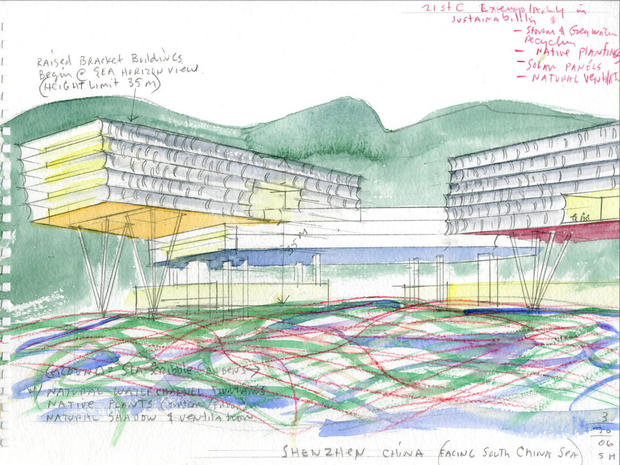 Steven Holl
Steven Holl
Born in Bremerton, Washington, 75-year old Holl studied in Rome and London. He has come a long way since he launched his firm in 1977 when, to make ends meet, he slept in his Manhattan office. “I put a plywood deck there and a mattress on top of it. And I hung my clothes on the sprinkler pipe. And no one knew I lived there. And then I would shower at the YMCA at six o’clock every night.”
But he didn’t hit it big until the early ’90s, when he won the competition to design the Kiasma Museum in Helsinki: “There were 416 entries, and we won by unanimous vote.”
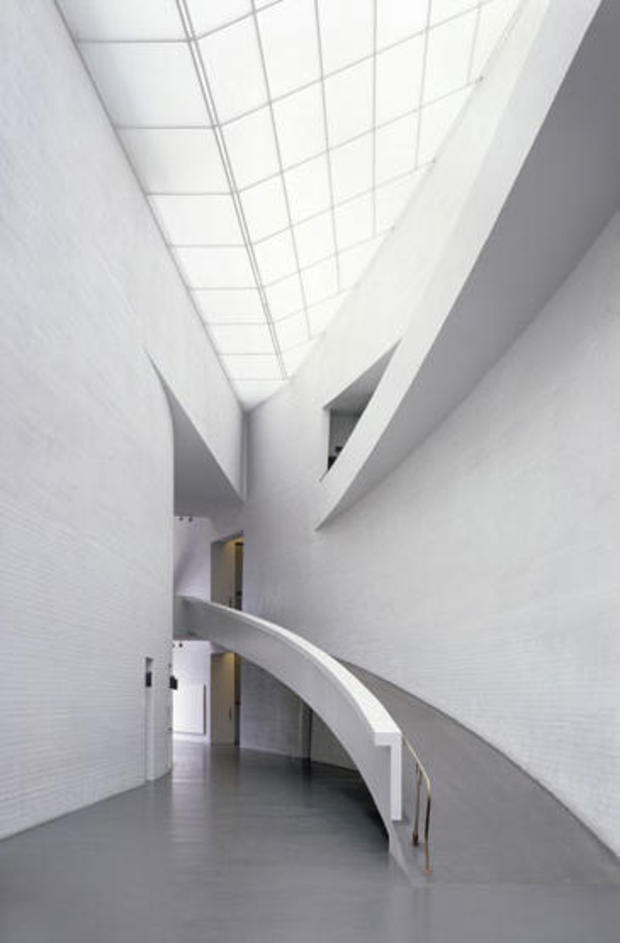 The Kiasma contemporary art museum in Helsinki, Finland. Paul Warchol/.Steven Holl Architects
The Kiasma contemporary art museum in Helsinki, Finland. Paul Warchol/.Steven Holl Architects
Today, Holl is the father of two young children, and happily married, since 2016, to Dimitra Tsachrelia.
Braver said, “You waited kind of a while before starting a family?”
“Because I fell in love with an architect,” Holl said. “I have two divorces before that, that both women divorced me ’cause they said, ‘It’s me or architecture.’ And I said, ‘It’s architecture.’
“I lost out two times, but now I hit a jackpot, ’cause she’s an architect, and she loves architecture!”
Among the newest creations to emerge from Holl’s sketchbooks are the dramatic Kinder Building at the Museum of Fine Arts, Houston, and its companion, the Glassel School of Art.
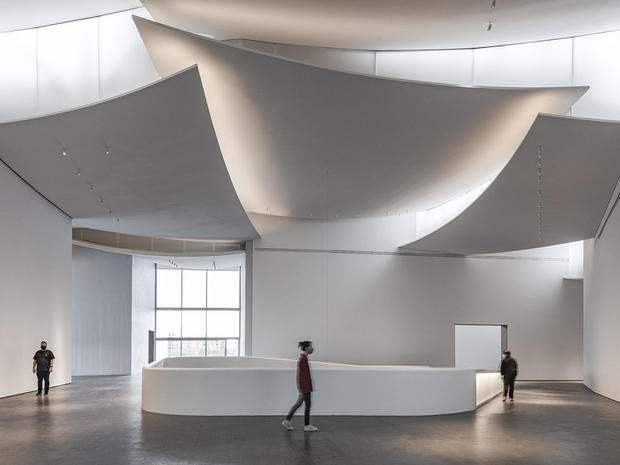 The Nancy and Rich Kinder Building at the Museum of Fine Arts, Houston, designed by Steven Holl. Richard Barnes/Museum of Fine Arts, Houston
The Nancy and Rich Kinder Building at the Museum of Fine Arts, Houston, designed by Steven Holl. Richard Barnes/Museum of Fine Arts, Houston
Museum director Gary Tinterow shepherded the nearly half-billion dollar project to completion.
Braver said, “Steven Holl buildings are not known to be what you go for if you’re looking to be on a shoestring budget. They are expensive buildings.”
“Yes, but not extraordinarily expensive,” said Tinterow. “There’s something very clever and economical about Steven Holl and company’s vision for architecture. It’s much more about space than it is about luxurious materials. They want to have these large spans, these big open spaces, using humble materials like concrete. And sometimes they’re at the outer limits of what we can achieve.”
 The Glassel School of Art in Houston, designed by Steven Holl. CBS News
The Glassel School of Art in Houston, designed by Steven Holl. CBS News
And for Holl, there’s delight in not knowing the limits of what will come next: “The joy is immeasurable,” he said. “The joy from the creative act, that’s the most exciting thing that can happen. And I don’t even know where it all comes from. It just happens very quickly.”
For more info:
Story produced by Ed Forgotson and Sara Kugel. Editor: Chad Cardin.
Trending News